Experimental Analysis of Driver Visual Characteristics in Urban Tunnels
Abstract
:1. Introduction
2. Literature Review
3. Experiment Design
3.1. Experiment Locations
3.2. Experiment Facilities
3.3. Participants
3.4. Experimentation
- (1)
- Step 1: Each subject calibrates the eye tracker to ensure the normal function of the experimental equipment.
- (2)
- Step 2: Subjects start from Huayuan Road along Xuanwu Avenue in the direction of the Xinzhuang interchange. They are familiar with the vehicle condition and do not record the experimental data.
- (3)
- Step 3: After arriving at the Xinzhuang overpass, the eye tracker data is recorded. Meanwhile, the experimental assistants begin to record the speed data and illuminance data.
- (4)
- Step 4: After driving counterclockwise around the fast inner ring for one week, the subject makes a U-turn at the Xinzhuang overpass and then drives clockwise around the fast inner ring for one week to complete the experiment.
4. Results
4.1. Analysis of the Change Law of Visual Characteristics of Drivers in a Single Urban Tunnel
4.2. Clustering Analysis of Visual Characteristics of Urban Tunnel Drivers
4.2.1. Cluster Analysis of Pupil Diameter
4.2.2. Cluster Analysis of Change Rate of Pupil Diameter
4.2.3. Bivariate Cluster Analysis
4.3. Analysis of the Impact of Urban Tunnel Length on Drivers’ Visual Characteristics
4.3.1. Analysis of the Influence of Urban Tunnel Length on Pupil Diameter
4.3.2. Analysis of the Influence of Urban Tunnel Length on Saccade Time
4.3.3. Analysis of the Influence of Urban Tunnel Length on Gaze Area
5. Conclusions
Author Contributions
Funding
Institutional Review Board Statement
Informed Consent Statement
Data Availability Statement
Conflicts of Interest
References
- Ma, Y.; Lu, L.; Lu, J.J. Safety evaluation model of urban cross-river tunnel based on driving simulation. Int. J. Inj. Control. Saf. Promot. 2016, 24, 293–302. [Google Scholar] [CrossRef]
- Du, Z.; Zheng, Z.; Zheng, M. Drivers’ visual comfort at highway tunnel portals: A quantitative analysis based on visual os-cillation. Transp. Res. Part D Transp. Environ. 2014, 31, 37–47. [Google Scholar]
- Changbin, C.; Junhua, W.; Yangming, L.; Cao, C. Driving simulator validation for research on driving behavior at entrance of urban underground road. In Proceedings of the 2015 International Conference on Transportation Information and Safety (ICTIS), Wuhan, China, 25–28 June 2015; pp. 147–150. [Google Scholar]
- Zhou, Z.; Ma, J.; Lu, T.; Li, G.; Fang, S.; Tan, T. An Evaluation Method for Visual Search Stability in Urban Tunnel Entrance and Exit Sections Based on Markov Chain. IEEE Access 2020, 8, 68559–68569. [Google Scholar] [CrossRef]
- Liang, S.Y.; Yang, C.Y. Study of the Lighting of Entrance/Exit Segments of Urban Tunnels and Outside-Tunnel Roads Based on Visual Efficiency Theory. Appl. Mech. Mater. 2014, 470, 871–875. [Google Scholar] [CrossRef]
- Feng, Z.; Yang, M.; Zhang, W.; Du, Y.; Bai, H. Effect of longitudinal slope of urban underpass tunnels on drivers’ heart rate and speed: A study based on a real vehicle experiment. Tunn. Undergr. Space Technol. 2018, 81, 525–533. [Google Scholar] [CrossRef]
- Yang, Y.; Yao, M. Analysis of Influencing Factors of Traffic Accidents in Undersea Tunnel. J. Eng. Res. Rep. 2020, 37–49. [Google Scholar] [CrossRef]
- Zhao, E.-Z.; Dong, L.-L.; Chen, Y.; Lou, Q.; Xu, W.-H. The Impact of LED Color Rendering on the Dark Adaptation of Human Eyes at Tunnel Entrances. Int. J. Environ. Res. Public Health 2020, 17, 1566. [Google Scholar] [CrossRef] [Green Version]
- Jiao, F.; Du, Z.; Wang, S.; Ni, Y.; He, R. Drivers’ Saccade Characteristics in Curves of Extra-Long Urban Underwater Tunnels. Transp. Res. Rec. J. Transp. Res. Board 2020, 2674, 102–111. [Google Scholar] [CrossRef]
- Jiao, F.; Du, Z.; Wang, S.; Yang, L.; Ni, Y. Research on drivers’ visual characteristics in different curvatures and turning conditions of the extra-long urban underwater tunnels. Tunn. Undergr. Space Technol. 2020, 99, 103360. [Google Scholar] [CrossRef]
- Zheng, Z.; Du, Z.; Yan, Q.; Xiang, Q.; Chen, G. The impact of rhythm-based visual reference system in long highway tunnels. Saf. Sci. 2017, 95, 75–82. [Google Scholar] [CrossRef]
- Feng, D.; Chen, F.; Pan, X. Research on Driver Physiological Load at the Lowest Point of City River-crossing Tunnels. Transp. Res. Procedia 2017, 25, 1494–1502. [Google Scholar] [CrossRef]
- Gil-Martín, L.; Peña-García, A.; Jiménez, A.; Hernández-Montes, E. Study of light-pipes for the use of sunlight in road tunnels: From a scale model to real tunnels. Tunn. Undergr. Space Technol. 2014, 41, 82–87. [Google Scholar] [CrossRef]
- Roberts, A.C.; Christopoulos, G.I.; Car, J.; Soh, C.-K.; Lu, M. Psycho-biological factors associated with underground spaces: What can the new era of cognitive neuroscience offer to their study? Tunn. Undergr. Space Technol. 2016, 55, 118–134. [Google Scholar] [CrossRef]
- Mehri, A.; Sajedifar, J.; Abbasi, M.; Naimabadi, A.; Mohammadi, A.A.; Teimori, G.H.; Zakerian, S.A. Safety evaluation of lighting at very long tunnels on the basis of visual adaptation. Saf. Sci. 2019, 116, 196–207. [Google Scholar] [CrossRef]
- Kircher, K.; Ahlstrom, C. The impact of tunnel design and lighting on the performance of attentive and visually distracted drivers. Accid. Anal. Prev. 2012, 47, 153–161. [Google Scholar] [CrossRef] [PubMed]
- Kircher, K.; Ahlstrom, C. Evaluation of methods for the assessment of attention while driving. Accid. Anal. Prev. 2018, 114, 40–47. [Google Scholar] [CrossRef] [PubMed]
- Hu, X.; Zhang, F.; Lu, J.; Liu, M.; Ma, Y.; Wan, Q. Research on influence of sun glare in urban tunnels based on cellular automaton model in the framework of Kerner’s three-phase traffic theory. Phys. A Stat. Mech. Its Appl. 2019, 527, 121176. [Google Scholar] [CrossRef]
- He, S.; Liang, B.; Pan, G.; Wang, F.; Cui, L. Influence of dynamic highway tunnel lighting environment on driving safety based on eye movement parameters of the driver. Tunn. Undergr. Space Technol. 2017, 67, 52–60. [Google Scholar] [CrossRef]
- Qin, X.; Zhang, N.; Zhang, W.; Meitner, M. How does tunnel interior color environment influence driving behavior? Quantitative analysis and assessment experiment. Tunn. Undergr. Space Technol. 2020, 98, 103320. [Google Scholar] [CrossRef]
- Guo, Y.; Wang, X.; Xu, Q.; Liu, F.; Liu, Y.; Xia, Y. Change-Point Analysis of Eye Movement Characteristics for Female Drivers in Anxiety. Int. J. Environ. Res. Public Health 2019, 16, 1236. [Google Scholar] [CrossRef] [Green Version]
- Qin, L.; Dong, L.-L.; Xu, W.-H.; Zhang, L.-D.; Leon, A.S. Influence of Vehicle Speed on the Characteristics of Driver’s Eye Movement at a Highway Tunnel Entrance during Day and Night Conditions: A Pilot Study. Int. J. Environ. Res. Public Health 2018, 15, 656. [Google Scholar] [CrossRef] [Green Version]
- Yan, Y.; Yuan, H.; Wang, X.; Xu, T.; Liu, H. Study on Drivers Fixation Variation at Entrance and Inside Sections of Tunnel on Highway. Adv. Mech. Eng. 2014, 7, 273427. [Google Scholar] [CrossRef]
- Hu, Y.; Zhu, T.; Li, J.; Liu, H. Research on fixation transition characteristics of drivers in extra-long tunnel. J. Saf. Sci. Technol. 2017, 13, 42–48. [Google Scholar]
- Zhu, T.; Wu, L.; Hu, Y.; Liu, H.; Xu, B. Research on Characteristics of Drivers Mental Workload in Extra-long Expressway Tunnels Based on the Factor Model. China J. Highw. Transp. 2018, 31, 165–175. [Google Scholar]
- Peng, J.; Wang, C.; Shao, Y.; Xu, J. Visual Search Efficiency Evaluation Method for Potential Connected Vehicles on Sharp Curves. IEEE Access 2018, 6, 41827–41838. [Google Scholar] [CrossRef]
- Du, Z.; Xu, W.; Xiang, Y. Research on Light Environment Improvement Framework of Highway Tunnel Based on Visual Guidance. China J. Highw. Transp. 2018, 31, 122–129. [Google Scholar]
- Du, Z.; Ni, Y.; Yang, L.; Wen, J.; Yu, X. Effectiveness Experiment of Sight Induction Facilities of Curve Sections in Highway Tunnel. J. Traffic Transp. Eng. 2020, 20, 215–225. [Google Scholar]
- Hu, J.; Zhang, X.; Guo, D. Research on the Tunnel Entrance Night Light Environment of Highway Tunnel Based on Visual Safety. Trans. Beijing Inst. Technol. 2016, 36, 487–490. [Google Scholar]
- Zhang, X.; Hu, J.; Wang, M.; Guo, X. Road Surface Luminance of Tunnel Interior Zone Based on the Driving Visual Cognition Demand. J. Beijing Univ. Technol. 2016, 42, 768–773. [Google Scholar]
- Cai, X.; Cailin, L.; Bo, P.; Xiaoyong, T.; Zhigang, G. Road Traffic Safety Risk Estimation Based on Driving Behavior and Information Entropy. China J. Highw. Transp. 2020, 33, 190–201. [Google Scholar]
- Fu, Z.; Tian, Z.; Xu, Y.; Qiao, C. A Two-Step Clustering Approach to Extract Locations from Individual GPS Trajectory Data. ISPRS Int. J. Geo-Inf. 2016, 5, 166. [Google Scholar] [CrossRef]
- Liang, B.; Shiyong, H.; Guobing, P.; Yao, X.; Lulu, C. Study of Driving Safety in a Highway Tunnel with New Interior Applied Materials. Mod. Tunn. Technol. 2015, 52, 16–21, 29. [Google Scholar]
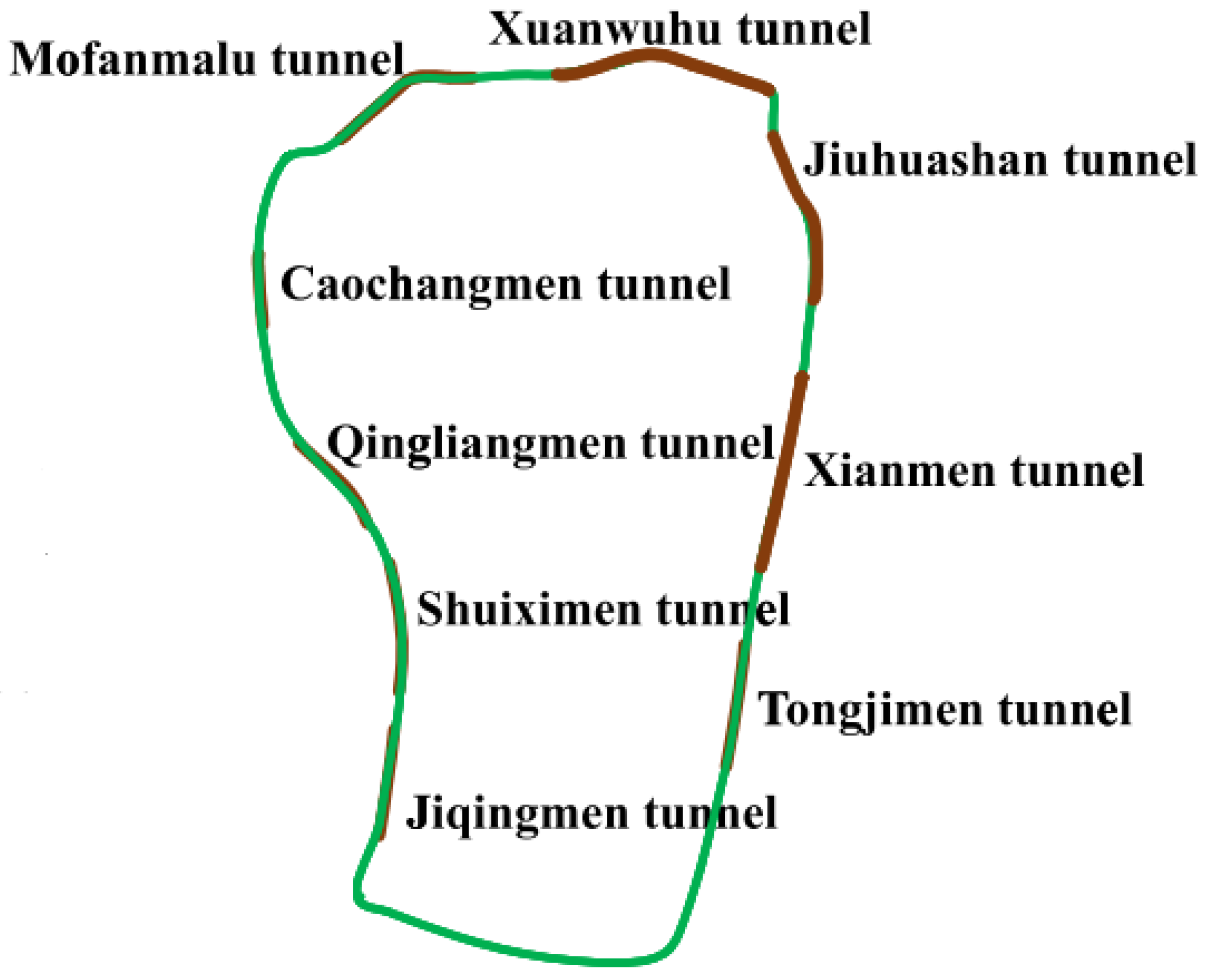
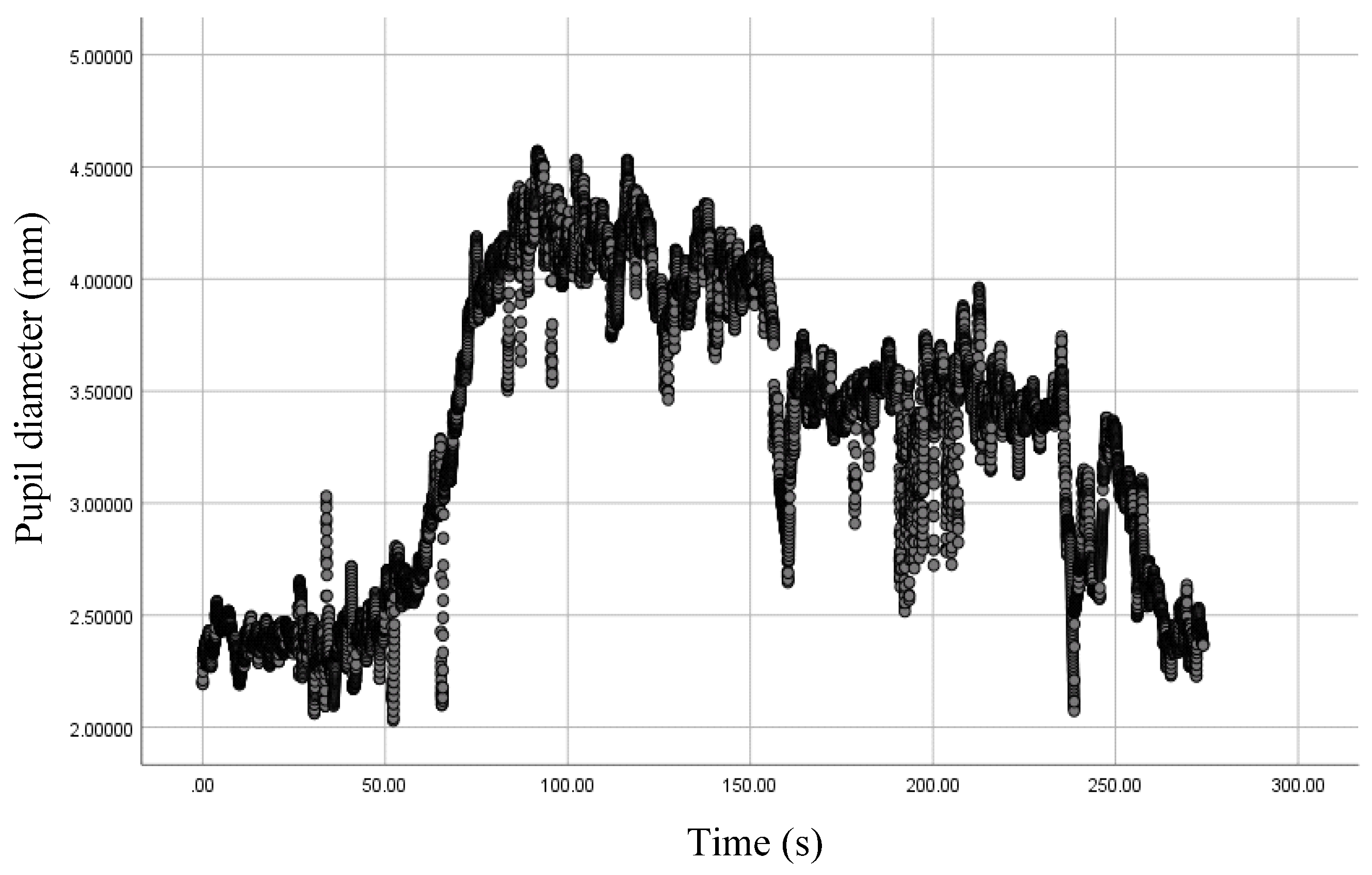
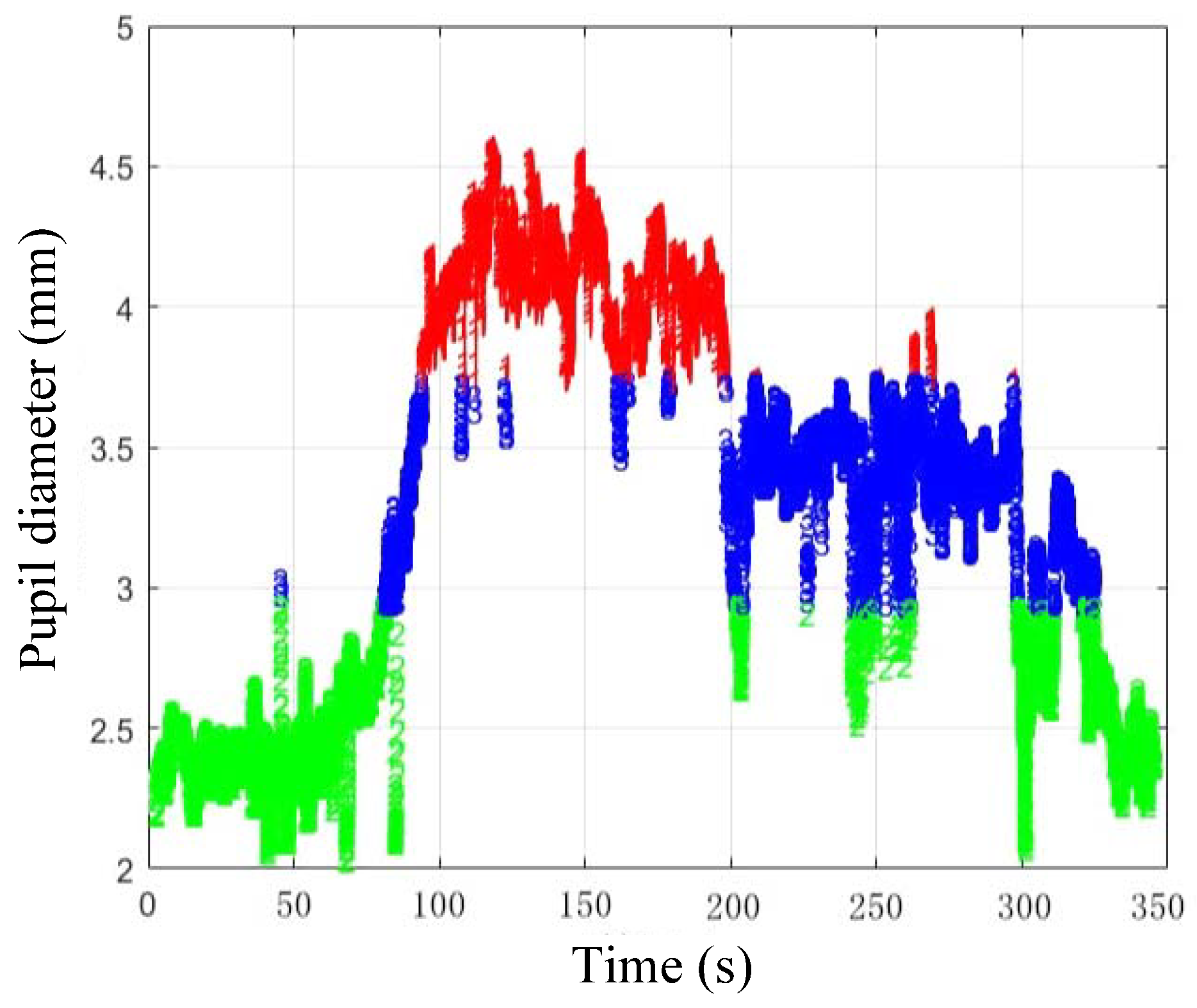
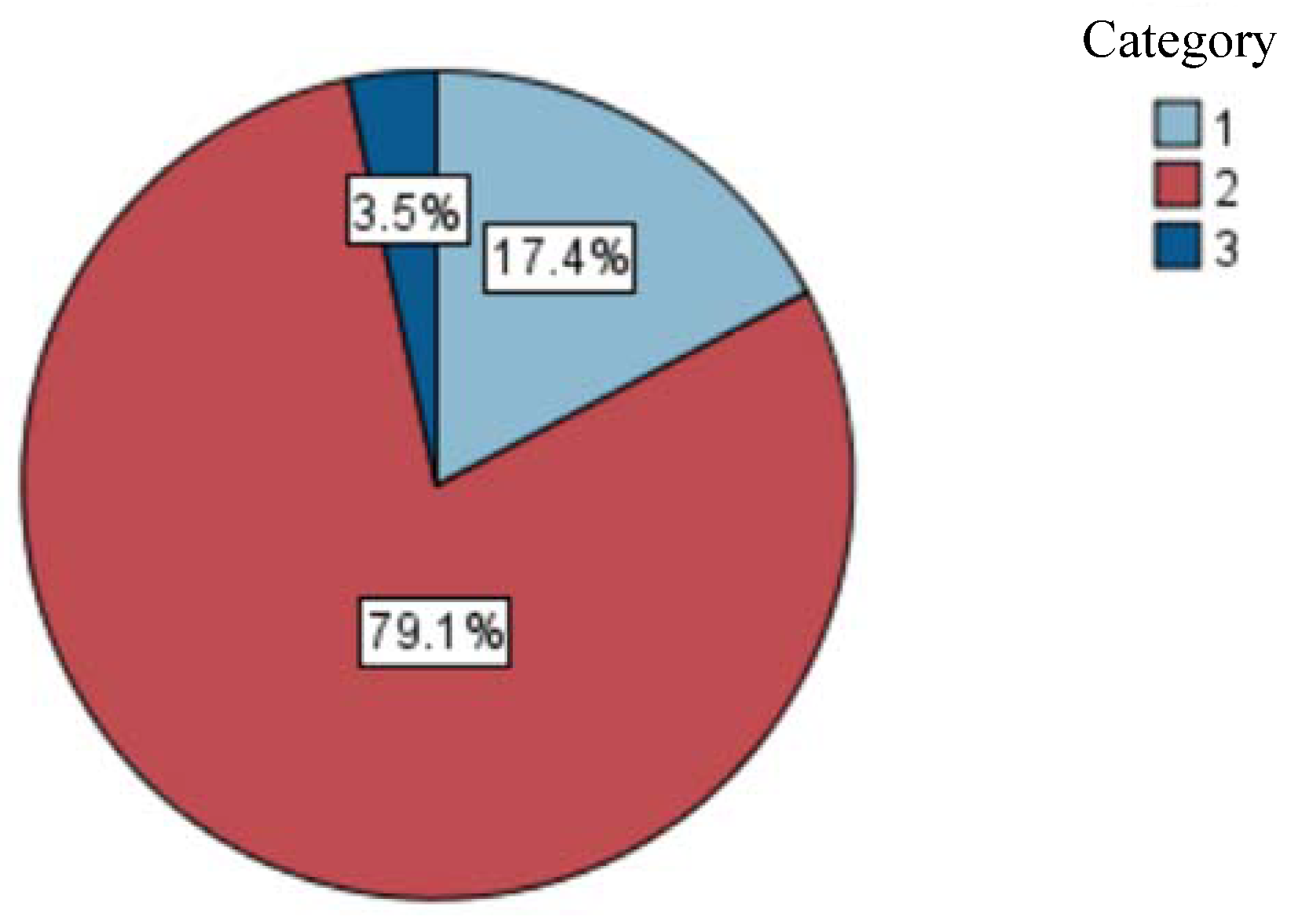

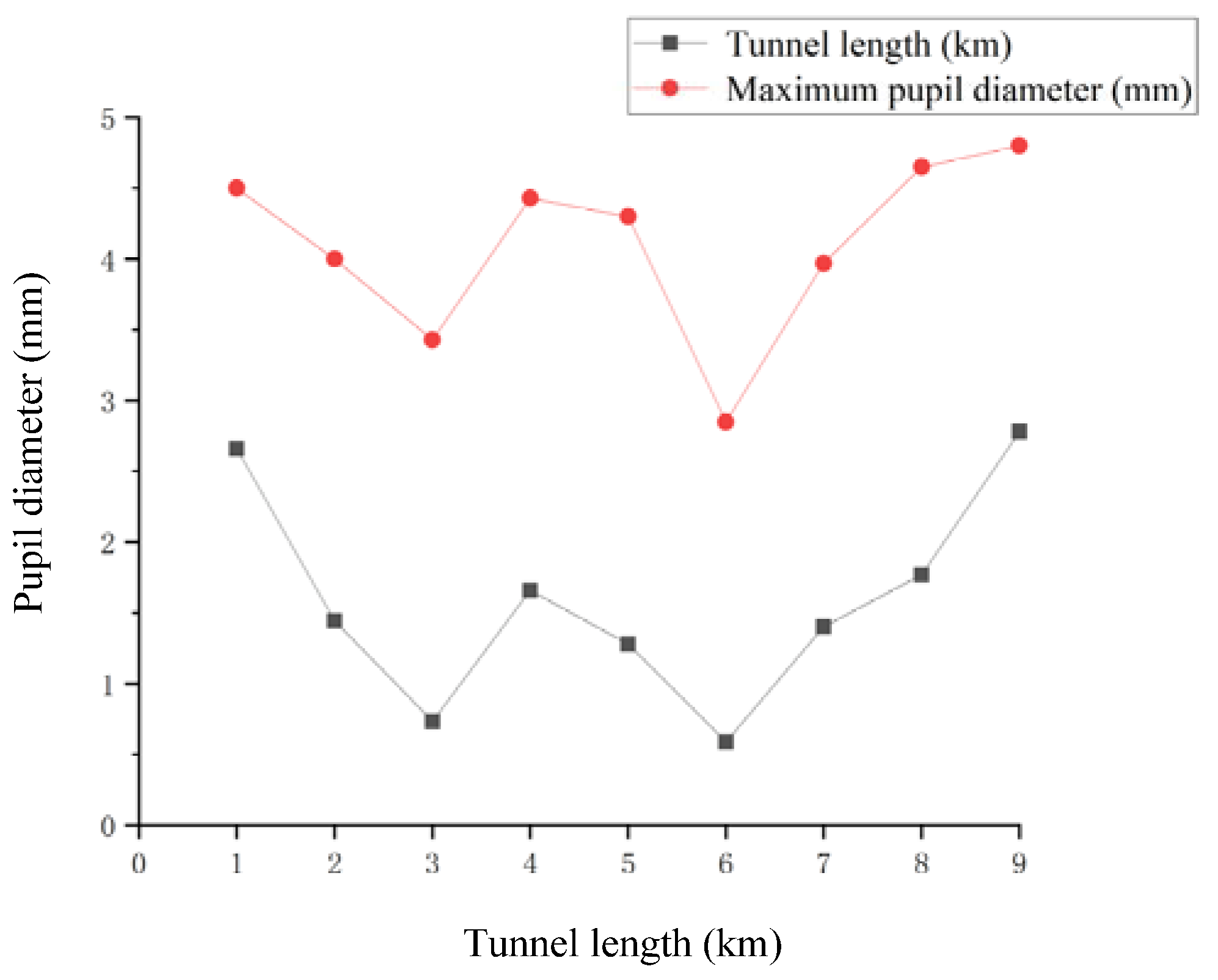




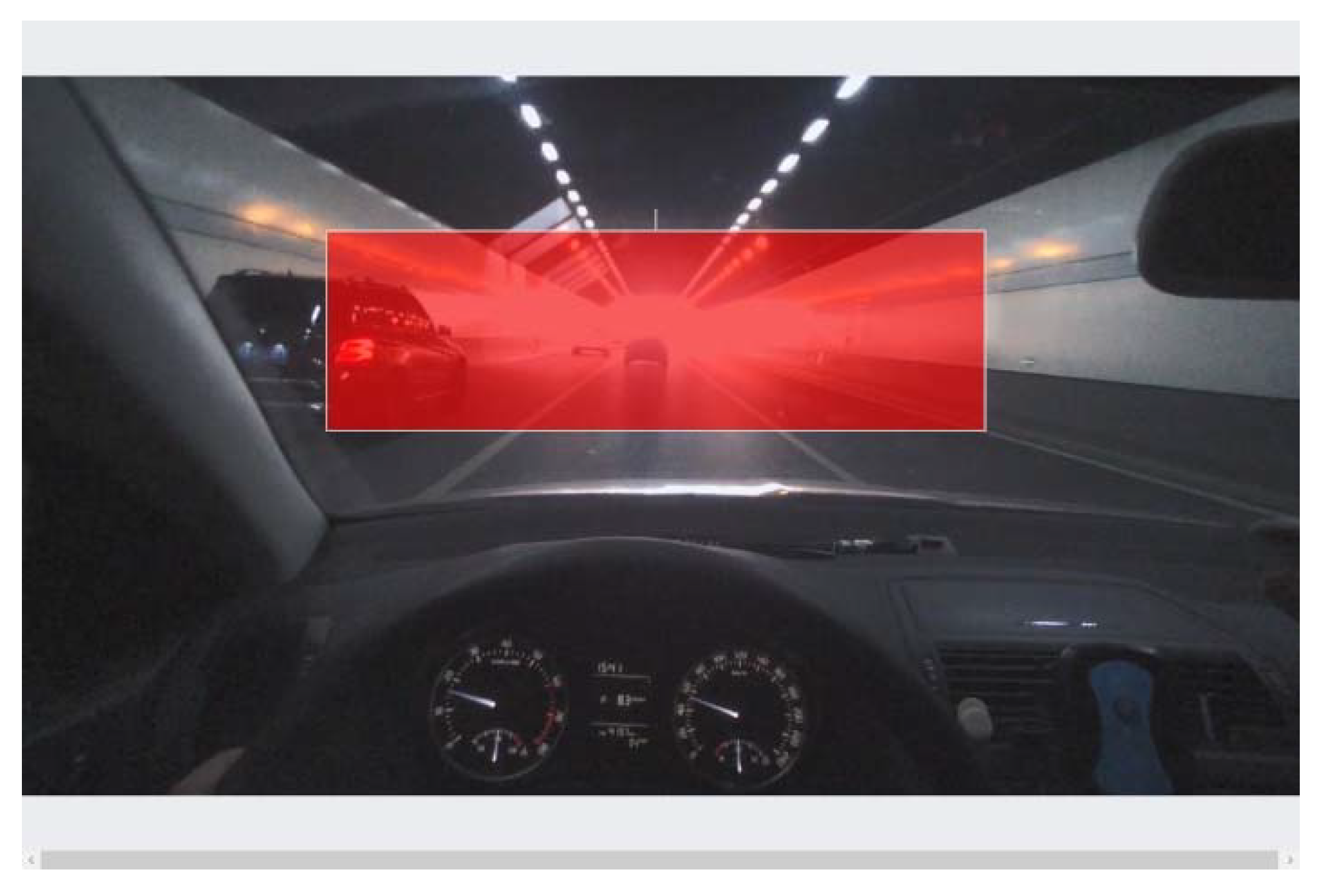
| Tunnel | Length (km) |
|---|---|
| Xuanwuhu Tunnel | 2.66 |
| Mofanmalu Tunnel | 1.44 |
| Caochangmen Tunnel | 0.73 |
| Qingliangmen Tunnel | 1.66 |
| Shuiximen Tunnel | 1.28 |
| Jiqingmen Tunnel | 0.59 |
| Tongjimen Tunnel | 1.40 |
| Xianmen Tunnel | 1.77 |
| Jiuhuashan Tunnel | 2.78 |
| Category | Samples | Percentage | Cluster Center | Standard Deviation |
|---|---|---|---|---|
| 1 | 4173 | 30.5% | 4.0867 | 0.1734 |
| 2 | 4579 | 33.4% | 2.4782 | 0.1687 |
| 3 | 4948 | 36.1% | 3.3765 | 0.1986 |
| Category | Samples | Percentage | Cluster Center | Standard Deviation |
|---|---|---|---|---|
| 1 | 2384 | 17.4% | 0.9727 | 0.6037 |
| 2 | 10,841 | 79.1% | −0.1587 | 0.4075 |
| 3 | 474 | 3.5% | −1.2461 | 1.1119 |
| Category | Samples | Percentage | Cluster Center | Standard Deviation |
|---|---|---|---|---|
| 1 | 2339 | 17.8% | 1.6244 | 0.2783 |
| 2 | 4535 | 33.1% | 0.4502 | 0.3346 |
| 3 | 6726 | 49.1% | −0.8926 | 0.2041 |
| Tunnel | Percentage (%) |
|---|---|
| Xuanwuhu Tunnel | 52.4 |
| Mofanmalu Tunnel | 61.7 |
| Caochangmen Tunnel | 78.5 |
| Qingliangmen Tunnel | 59.8 |
| Shuiximen Tunnel | 65.7 |
| Jiqingmen Tunnel | 83.6 |
| Tongjimen Tunnel | 66.8 |
| Xianmen Tunnel | 57.2 |
| Jiuhuashan Tunnel | 50.8 |
Publisher’s Note: MDPI stays neutral with regard to jurisdictional claims in published maps and institutional affiliations. |
© 2021 by the authors. Licensee MDPI, Basel, Switzerland. This article is an open access article distributed under the terms and conditions of the Creative Commons Attribution (CC BY) license (https://creativecommons.org/licenses/by/4.0/).
Share and Cite
Fang, S.; Ma, J. Experimental Analysis of Driver Visual Characteristics in Urban Tunnels. Appl. Sci. 2021, 11, 4274. https://doi.org/10.3390/app11094274
Fang S, Ma J. Experimental Analysis of Driver Visual Characteristics in Urban Tunnels. Applied Sciences. 2021; 11(9):4274. https://doi.org/10.3390/app11094274
Chicago/Turabian StyleFang, Song, and Jianxiao Ma. 2021. "Experimental Analysis of Driver Visual Characteristics in Urban Tunnels" Applied Sciences 11, no. 9: 4274. https://doi.org/10.3390/app11094274
APA StyleFang, S., & Ma, J. (2021). Experimental Analysis of Driver Visual Characteristics in Urban Tunnels. Applied Sciences, 11(9), 4274. https://doi.org/10.3390/app11094274





